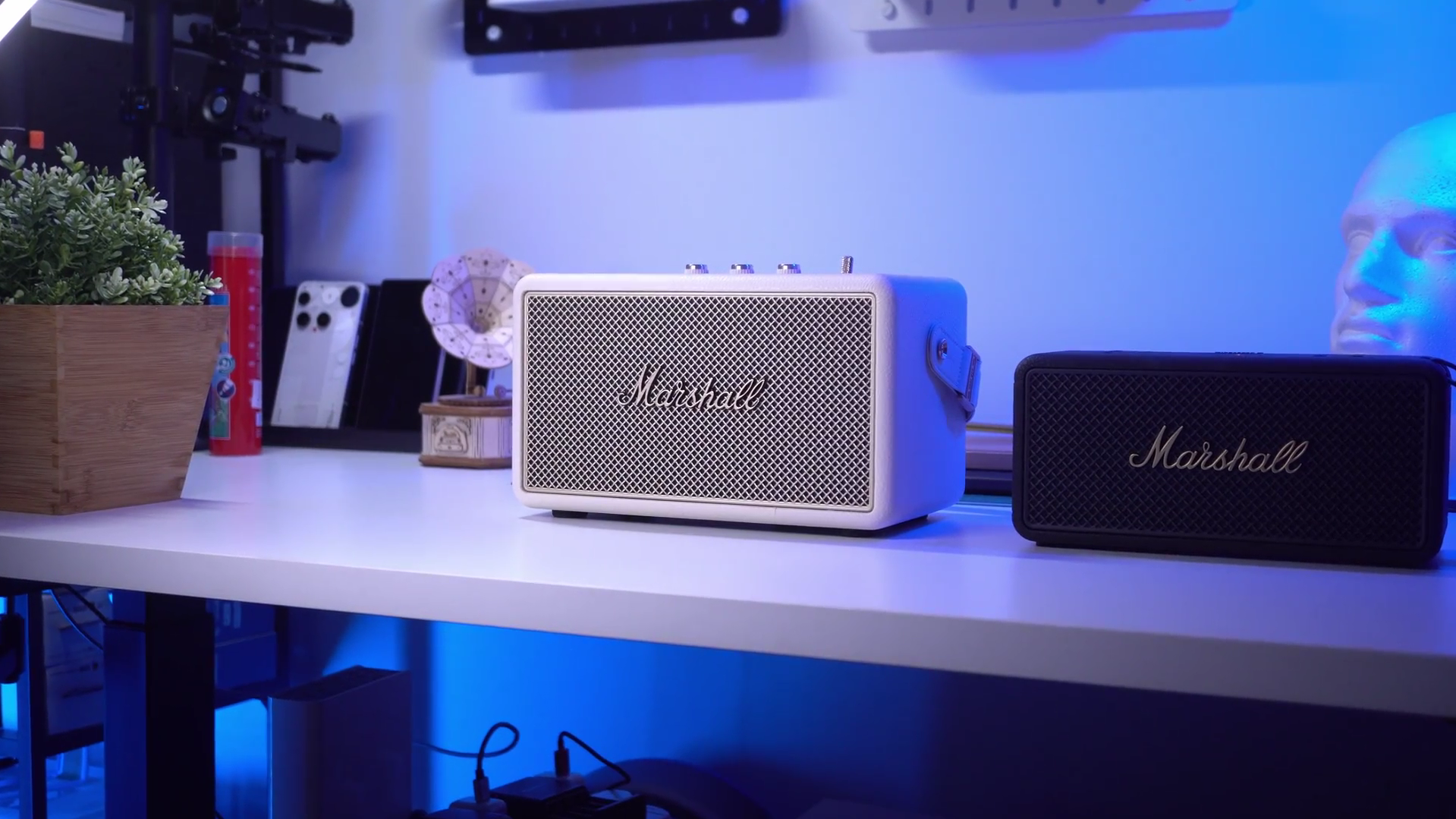NEW Marshall Middleton 2 vs Kilburn 3 Review - EASY Choice! But... 🤔
I’m going to be direct with you that if the choice were between the Marshall Kilburn III and the Middleton II, I’ll choose the Kilburn III. It’s just more appealing to me for a few reasons that I’m going to get into.
But there are also reasons to go for the Middleton II, obviously because of its size. It’s more compact, and this gives you more options as to where to place it. Also it’s easier to carry around. But why do I still have the hots for Kilburn III then? Stick around because we’re going to dive into their features, sound quality, and pros and cons.
Physical Button
What sets both Marshalls apart from other portable speakers is the controls on the speakers themselves. For the Kilburn III, you have a power switch, a paddle button to control music playback, and control knobs to operate the volume, bass and treble. You also have the Marshall button which lets you toggle between Marshall’s signature EQ and your own custom EQ selection. The controls feel nice and tactile, just like those on Marshall’s vintage amp.
Middleton 2’s microphone
The Middleton 2 doesn't have knobs and switches, instead using buttons for bass and treble controls, and Marshall’s signature click knob for volume and music playback.
It doesn’t have the ‘M’ button, but there is a microphone on top, so you can even use the Middleton II as a handsfree speaker, not the Kilburn because it doesn’t have a mic. But how well does Middleton's microphone pick up your voice from near or far?
Microphone Quality
Its mic pickup is really not bad even if you’re about 10 feet away, but of course, the closer you are to Middleton, the better the mic pickup.
👉 Have a listen to the microphone quality samples
Features
Now, both speakers have app support and they pretty much do the same things and have the same settings, like the Custom equalizer and the battery setting, being able to charge devices using the USB-C port, and multipoint pairing, which lets you pair up to two devices at the same time for convenience.
They both can also receive Auracast streams, so if I have an Auracast stream set up from an Auracast transmitter, or a phone that supports Auracast like the S25 Ultra, they can both receive it. At least that’s how it’s supposed to work. I had no problems connecting to an Auracast stream on the Kilburn, but I couldn’t do it on the Middleton II yet. Maybe a software update is on the way that could fix it. But if you don’t know what Auracast is, and what it can do, check out this video.
What the Kilburn III also has that the Middleton II doesn’t is Placement Compensation. The fact is, the speaker sound is affected by where you place it, and with this feature, you can set the Kilburn to sound better whether it’s in the corner of the room where it might be too boomy, on a table where bass might sound too weak. The Middleton III does not have this feature so you might have to be a bit more strategic about where to place it.
Sound Quality
In terms of the sound quality between the Middleton II and the Kilburn 3, assuming that they’re both set to default, I’m going to straight up say, in some ways, the Kilburn 3 sounds better, and obviously because it’s a much more powerful setup, packing a 4-inch woofer with a waveguide, and two 2-inch full range drivers. So you benefit from thicker bass and a fuller, richer sound in the mids, which means you hear more detail and vocals are tonally correct.
The Middleton II being a smaller speaker has two smaller 3-inch woofers with passive radiators, and a couple of 0.6 inch tweeters. Now, Tweeters can’t reproduce mids, so that job falls on the 3-inch woofers, and this in turn means the Middleton has a very v-shaped tuning with recessed mids. It still sounds great, and I do like V-shaped signatures too, but it’s got a different character from the Kilburn III.
That being said, the biggest advantage the Middleton II has over the Kilburn III is better soundstaging. With the Middleton II you will get some stereo left and right separation, which makes the speaker sound wider than it looks. But the Kilburn III sounds very mono, so all the tracks and instruments are hovering in a bubble above the speaker itself.
This does make it sound ‘taller’, and you will get the same sound experience no matter which direction you listen to it from, but there’s not going to be as much fidelity in terms of soundstaging compared to the Middleton III. In a nutshell, the Kilburn III sounds louder, fuller, richer, the Middleton II has better soundstaging.
It’s also worth noting that the EQ controls on the speakers are separate from the EQ settings in the Marshall Bluetooth app. So if you want to create your own custom EQ, you need to set the bass and treble on the speakers to neutral first.
Verdict
So why do I still prefer the Kilburn III over the Middleton II overall? Because performance wise, the Kilburn is still a more energetic speaker that reproduces more midrange detail, and can hit lower and louder. I also find its tactile controls more interactive and enjoyable, different from the usual button controls, and the placement compensation feature is a nice touch.
For those reasons, I’m willing to give up a bit more portability and choose the Kilburn III because I’m a very indoors guy to begin with, so portability is not such a critical factor. But if I did need more portability, some actual stereo separation, and something that functions as a handsfree, the Middleton II is a compelling choice.
Check latest prices:
Marshall Kilburn III - https://amzn.to/3GTzqak
Marshall Middleton II - https://amzn.to/4f7bxsE







